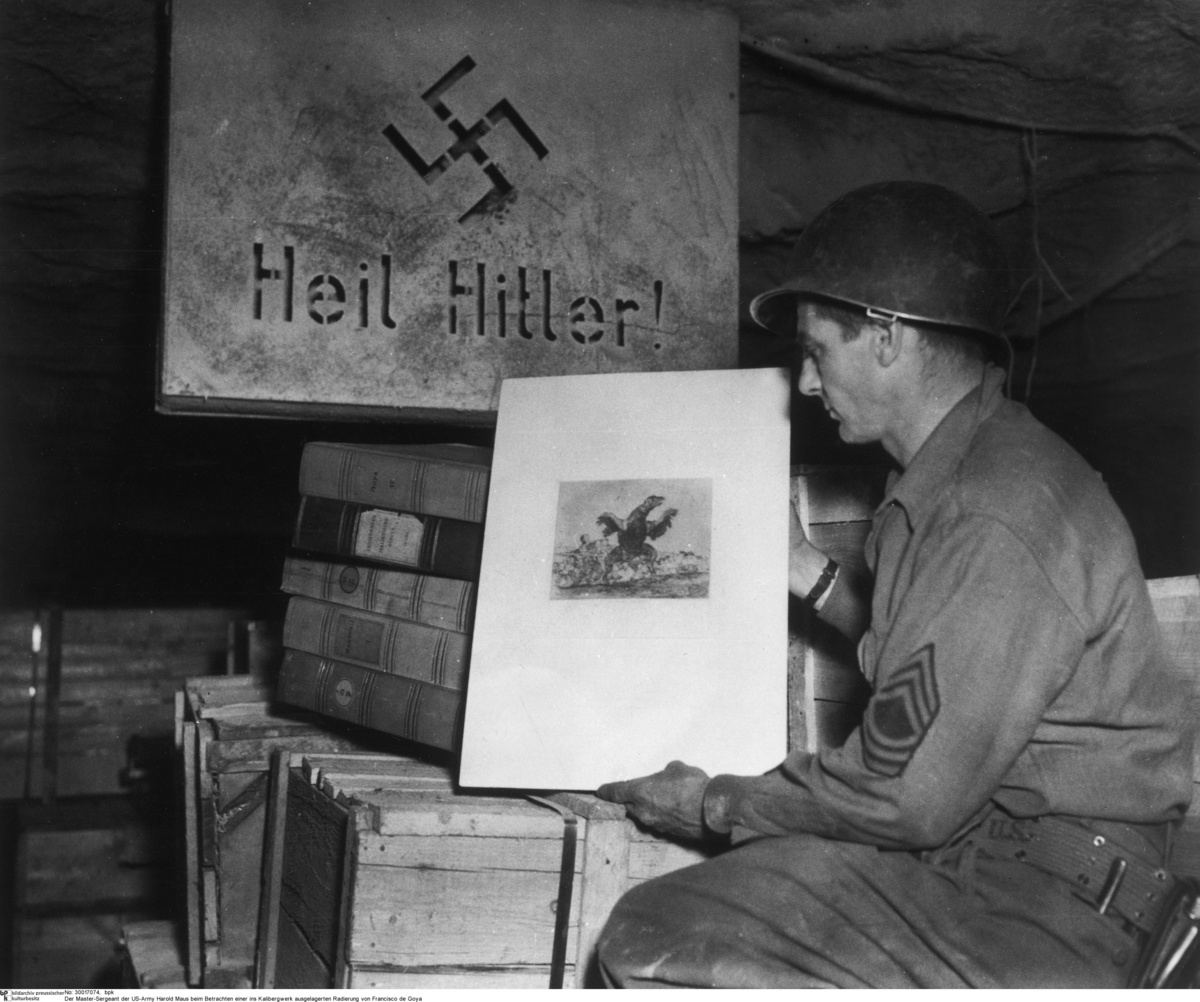Abstract
In early April 1945, members of the U.S. 90th Infantry Division
discovered an extensive German depot in the Merkers-Kaiseroda potash
mine in Thuringia. Among other things, it contained gold bullion and
gold coins worth 250 million dollars (including Reichsbank gold), 2.7
billion Reichsmarks in cash, large stores of foreign currency, as well
as many art objects (partly from Berlin museums). Infantry members also
discovered valuables belonging to Jews who had been murdered in the
Holocaust. Given the significance of the find, several high-ranking U.S.
military officials inspected the mine on April 12, 1945: General Dwight
D. Eisenhower (supreme commander of Allied Forces in Europe), General
Omar N. Bradley (commander of the 12th Army Group), Lieutenant General
George S. Patton (commander of the Third Army), and Major General Manton
S. Eddy (commander of the 12th Corps). The Americans began removing and
transporting the treasures to Frankfurt am Main on April 14-15.
The photograph shows Master Sergeant Harold Maus looking at the
etching El buitre carnivoro
[The Carnivorous Vulture] by
Francisco de Goya. It is part of the series
The Horrors of War and was among the
artworks sent to Merkers for safekeeping by the Berlin Museum of Prints
and Drawings [Berliner
Kupferstichkabinett].
